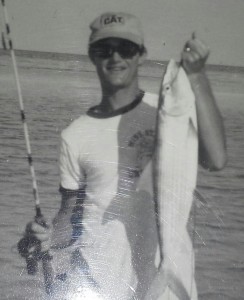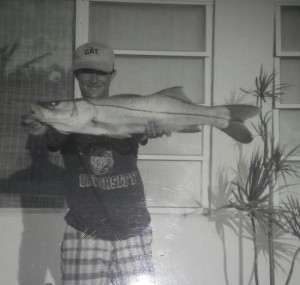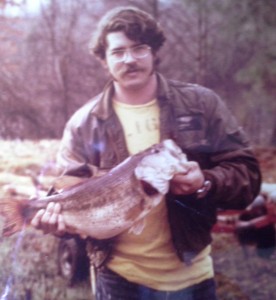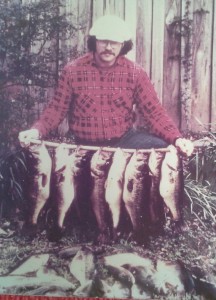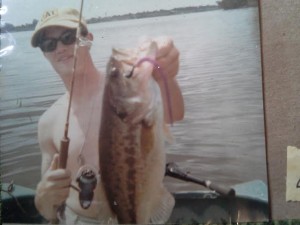This is an article from the Louisiana Sportsman’s magazine that was sent to me by John. I think it is good information.
Whether one loves it or hates it, a certain amount of catch-and-release fishing is here to stay. While fishermen have released some fish for a long time, the practice became high profile with the commercialization of black bass fishing through the founding of the Bass Anglers Sportsman Society by Ray Scott in 1967.
Scott obviously knew that the concept of turning a gang of expert bass fishermen loose to kill fish for money would not sit well with either local anglers or conservationists. So he stressed that his bass tournament participants released all their catch.
This ethic, if that is the proper term, caught on rapidly in the competitive bass-fishing world.
So strong is the belief in catch-and-release fishing amongst competitive anglers that some look on with absolute horror at those fishermen who keep their catch for consumption.
“Bass are too valuable to eat,†they cry.
Consumptive fishermen — those who haven’t abandoned bass fishing — return the emotions in spades. Fish were put here to eat, they retort, and if they obey legal limits they shouldn’t be sneered at for keeping their catch.
Some also began to resent the competition from tournament anglers in what they viewed as terribly overpowered boats. They cite the seemingly inevitably poor fishing on a water body following a major tournament.
At crux was the question of how many released bass survive after being wrestled from the water and held in livewells for hours. Tournament anglers claim almost all their fish survived and point fingers at consumptive fishermen, saying survival of the bass put in ice chests is zero.
Consumptive fishermen argue that most released tournament fish die, some days after release. Their main argument is against the waste of the fish.
A supporting argument is that released fish seldom, if ever, travel back to the territory from which they were taken, dramatically impacting fishing success.
In the neighboring state of Texas, biologists have conducted several studies on the impacts of tournament fishing on largemouth bass.
In Lake Umphrey, a small private lake in East Texas, they set up four teams of two anglers, with the teams making two trips each.
Each team used a different bait type: treble hook lures, Carolina rigged-plastic worms, live carp under a cork and live carp on the bottom.
Each team fished until it had 30 bass longer than 14 inches.
The hooking location was recorded for all fish before they were tagged and placed in the boats’ aerated livewells. If a fish was bleeding, it was noted.
For deep-hooked fish, the anglers were given the option of cutting the line and leaving the hook in place.
No fish were held in boat livewells longer than 15 minutes before being transferred to a 20-foot-deep, floating nylon mesh cage. There, the fish were held for 72 hours before release.
At the end of 72 hours, 22 percent of the bass had died. The death rate was little different for fish caught on live bait compared to those caught on artificials.
On the first trip, mortality was 13 percent for live bait-caught fish, compared to 23 percent for artificials. On the second trip it was 28 percent and 23 percent.
Mortality rates were associated with where the fish were hooked, though.
It was 48 percent for those hooked in the throat, 17 percent for those hooked in the gills, and 20 percent for mouth-hooked fish.
The percentage of throat-hooked fish was highest with plastic worms.
Bleeding was also important. Of the 240 fish captured, 19 were observed to be bleeding — and nine (47 percent) of those died.
Bleeding was observed more for fish hooked in the throat (48 percent) and the gills (50 percent) than for those hooked in the mouth (1 percent).
Anglers cut off and left hooks in 16 of 21 throat-hooked bass. Eight (50 percent) of these fish died, as did two of the five (40 percent) throat-hooked fish from which hooks had been removed.
Interestingly, for all fish, the larger the fish, the lower the mortality rate was.
Texas biologists have also looked at dispersal — where do largemouth bass go after being released at the end of the tournament day. A total of 12 studies were done over a 23-year period in lakes and rivers.
In some studies, the fish were tagged with plastic tags before release. In others, the fish were fitted with radio transmitters and electronically tracked.
Only 14 percent of the bass in the studies returned to their capture area. On average, 51 percent stayed within one mile of where they were released.
The length of time after release did not affect their rate of return to the capture site. In general, if they didn’t return to their capture site quickly, they didn’t return at all.
The longest distance a bass dispersed after release was 5.6 miles.
Bass tended to disperse more in rivers than lakes. Once released, an average of 22 percent of the fish were recaptured by other fishermen during the periods of the studies, which averaged nine months.
One biologist concluded that one reason so few fish dispersed to their capture sites was due to the effects of tournament capture and handling. The 23-percent death rate for released bass suggests, he said, that released fish are not in the best condition.
Recapture of released tournament fish must also be considered. About 5 percent of bass caught die during the tournament, with another 23 percent dying after release — for a total mortality of 28 percent.
After release, 22 percent of these fish are caught again. If they are caught in another tournament, they will suffer another 28 percent mortality. Of course, if they are caught by anglers who keep their catch, mortality will be total.
As a result, the biologists have recommended against releasing black bass at sites that have easy access and high fishing pressure. B.A.S.S. tournaments do use release boats to release fish away from tournament sites, not always the rule at local tournaments.

